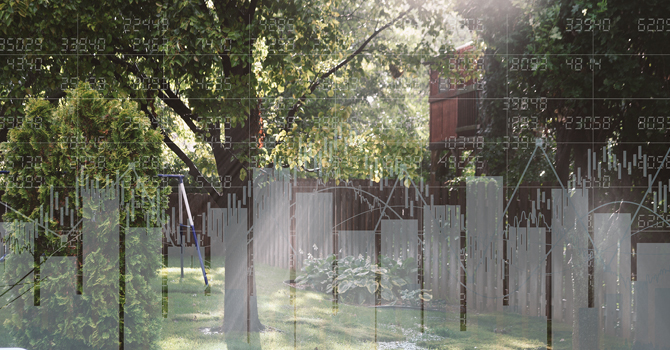Working in Everyone’s Backyard: Statistics in the Community

Stephen Salerno
PhD Student, Biostatistics
Students at Michigan Public Health share an innate drive to work within their surrounding communities to make a difference. This intrinsic call to action is a big part of what motivates most professionals in the field of public health. Whether serving those in need at a regional food bank, advancing STEM education for young women, or organizing a school-wide day of service, each of us strive to empower community change.
When a volunteer organization empowers individuals to dedicate time, resources, and knowledge to the pursuit of public good, great things can happen. Some of us work in the foreground, some of us in the background—but all contribute to improving the lives of those around us.
We do not sit in offices all day looking at formulas. We want to connect with others sharing similar motivations, seeking out areas of application that could benefit from our methods.
Statistics in the Community (STATCOM) at the University of Michigan is a community outreach organization offering the expertise of statistics graduate students—free of charge—to nonprofit governmental and community organizations. We help design studies, develop better data collection instruments, and analyze data for public good. Though most of our members are students in biostatistics and statistics, STATCOM also has volunteers from survey methodology, social work, epidemiology, information, and industrial and operations engineering.
At first glance, statistics seems to lie in the world of the theoretical. Those of us in the field tend to agree with mathematician John Tukey: the best part of being a statistician is that you "get to play in everyone else's backyard." We are also privileged to work in everyone else's backyard—we do not sit in offices all day only looking for "α+βX." Rather, we want to connect with others sharing similar motivations, seeking out areas of application that could benefit from our methods.
This work requires individuals who are not only altruistic but dedicated enough to carry forward projects that have great impact. Under the direction of Michael Elliott and Cathie Spino, and with the leadership of co-presidents Evan Reynolds and Tim NeCamp, STATCOM has flourished. In just a few short years, we have grown from 45 student members with 5 projects to 147 student members with 10 current projects. STATCOM is active in the Ann Arbor community, for example assisting the Ozone House in building a predictive model for scheduling staff volunteers to handle crisis calls from youth in the surrounding area.
We owe much to several meaningful cross-campus collaborations, including the Community Technical Assistance Collaborative (CTAC) in the Edward Ginsberg Center and the Michigan Institute for Data Science (MIDAS). Through these partnerships, we have taken on many projects in the three major metropolitan areas of Southeast Michigan. With CTAC, STATCOM developed a survey to determine the best allocation of 13 million dollars to improve services for the senior population of Washtenaw County. We are active in Genesee County, assessing perceptions of water quality and public health in the wake of the Flint Water Crisis. And we partnered recently with the Detroit College Access Network to evaluate the effect of their counseling program for Detroit high school students.
This spring, STATCOM, CTAC, and the Ann Arbor Data Dive held our first annual Data for Public Good Symposium. This saw more than 50 participants from 12 different disciplines showcasing the quantitative philanthropy going on across the university. It is our mission to continue to grow both as an organization and as a positive influence throughout the School of Public Health and the community at large. In volunteering, we at STATCOM have found our purpose—always leading, forever valiant, and above all else, pursuing a world of good.
- Read more about STATCOM and other service-oriented student organizations at Michigan Public Health.
About the Author
Stephen Salerno is a PhD student in Biostatistics at the University of Michigan School of Public Health. He first was introduced to the prospect of data for public good working on a study of civic participation, livelihood and employment, and the sexual and reproductive health and rights of school-aged children living in Kathmandu and Sunsari, Nepal. His research here at Michigan Public Health focuses on clinical quality measure development for those with end-stage renal disease (ESRD), bridging the gap between health care metrics and the patients who must make life-altering decisions based on this information.
